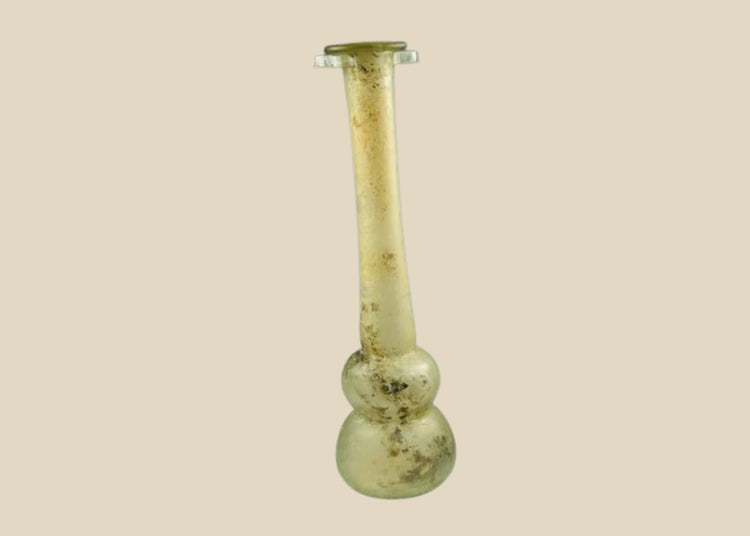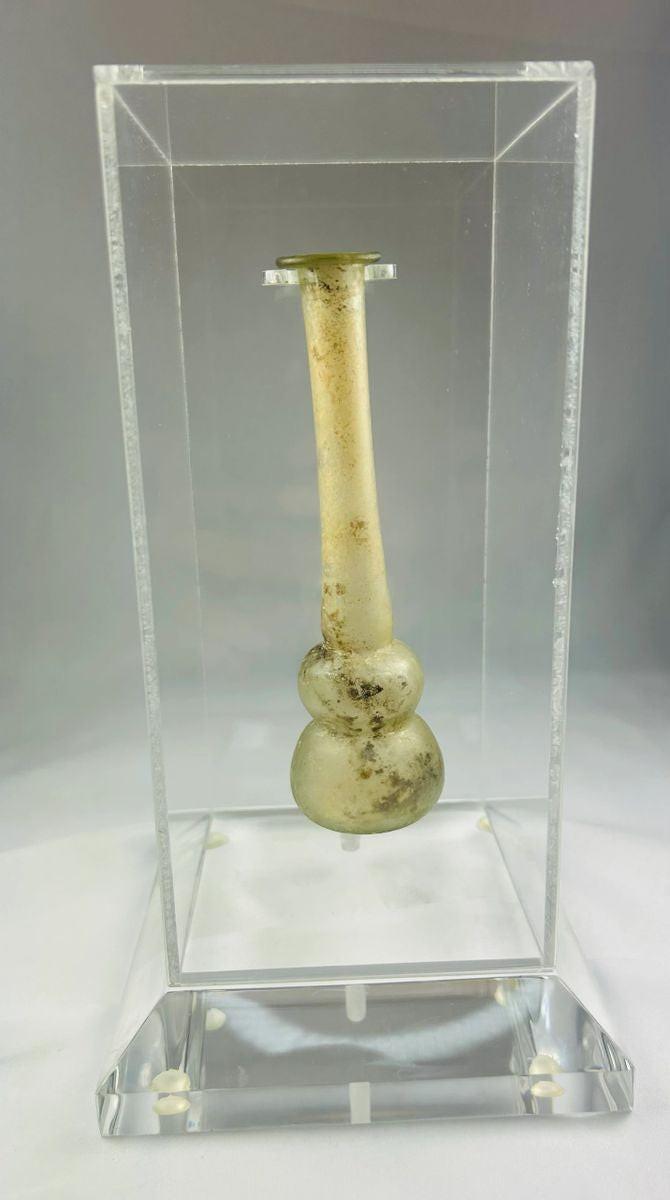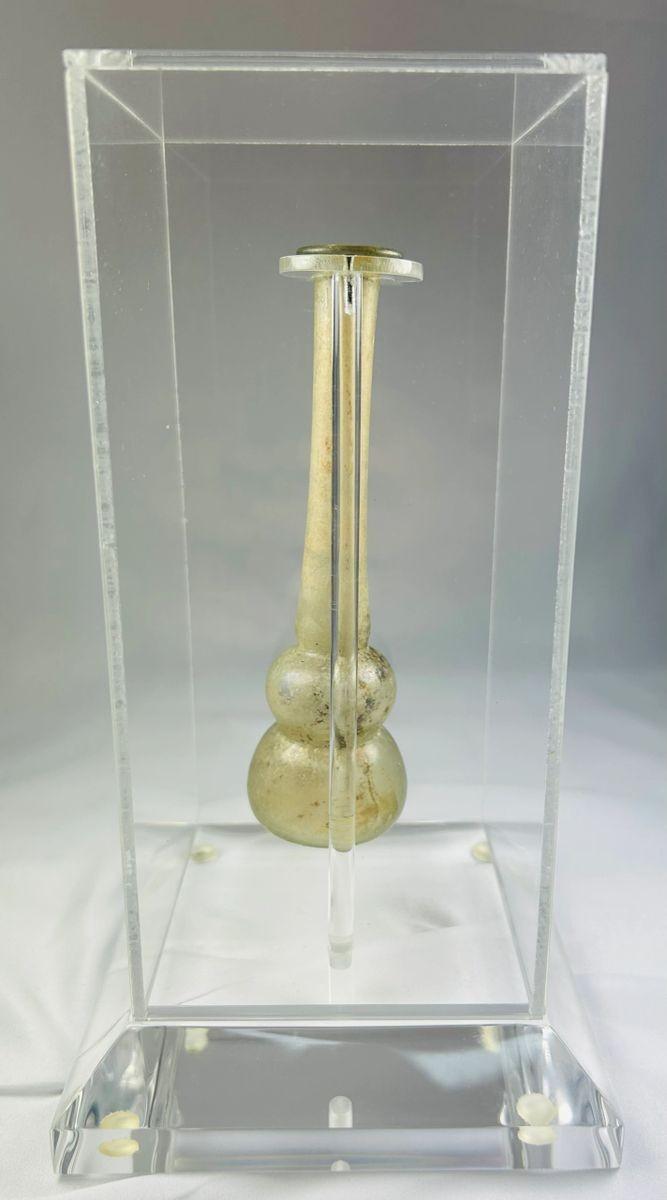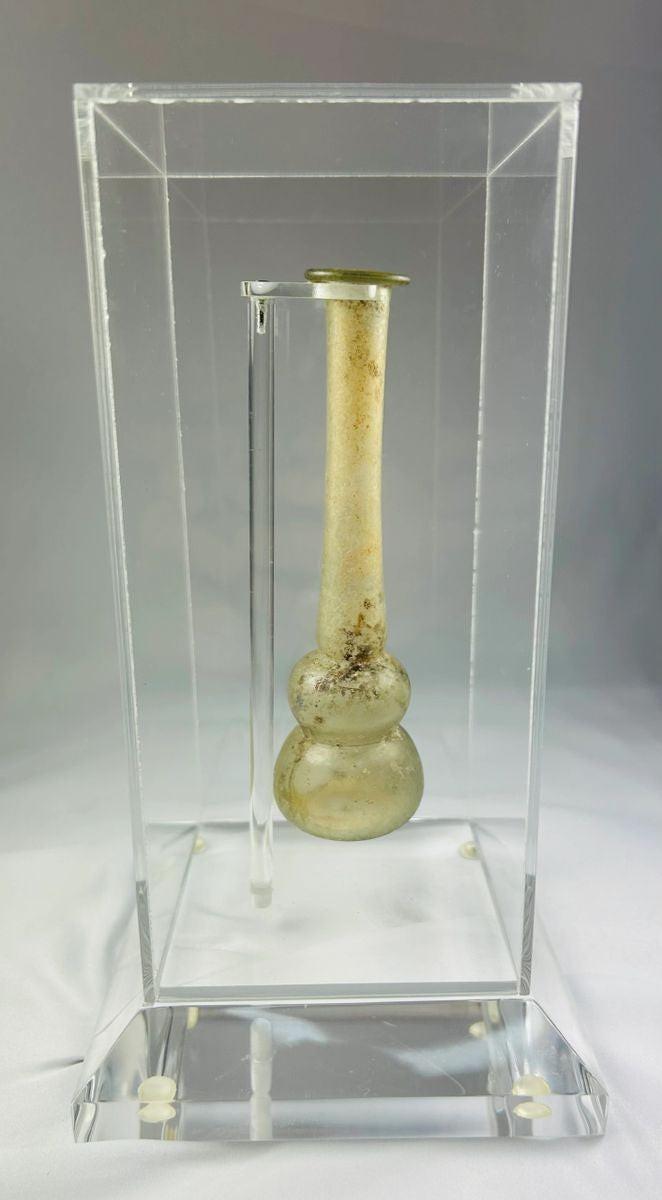Roman Clear Glass Double Gourd Candlestick Balsamarium | Circa 2nd-3rd century AD
Description
More
Less
Historical Context & Origin
Region: Roman Empire (likely Eastern Mediterranean)
Material: Clear glass with natural iridescent patina
Period: 2nd–3rd Century CE
Description
This Roman clear glass double gourd candlestick balsamarium exemplifies the elegance and practicality of Roman glassmaking. Crafted with two globular sections joined by a slender neck, the vessel was designed to minimize evaporation and preserve precious contents such as perfumes, balms, or ointments. Over centuries, the surface has developed a shimmering iridescence, enhancing its beauty and underscoring its antiquity.
Features
- Double gourd shape with narrow neck for liquid preservation
- Clear glass construction, prized in Rome for non-porous storage
- Naturally developed iridescent patina from centuries of burial
- Substantial size, designed for both function and refinement
- Housed in an acrylic case for secure display
Cultural Significance
Balsamariums were essential in Roman daily life, particularly within the bathhouse culture where perfumes and oils symbolized refinement, luxury, and personal care. Used by the elite, these vessels embodied Rome’s mastery of glassmaking and its emphasis on beauty, utility, and status. Their practical form combined with aesthetic appeal reflects the cultural sophistication of Roman society at its height.
Condition
The vessel survives in excellent condition, with a rich iridescent surface that enhances its visual and historical value. No modern repairs are visible. Presented in an acrylic case, it remains both protected and display-ready.
Dimensions (approximate)
Height: 9.5 in
Width: 4 in
Age
1,700–1,800 years old (2nd–3rd Century CE)
Description
Historical Context & Origin
Region: Roman Empire (likely Eastern Mediterranean)
Material: Clear glass with natural iridescent patina
Period: 2nd–3rd Century CE
Description
This Roman clear glass double gourd candlestick balsamarium exemplifies the elegance and practicality of Roman glassmaking. Crafted with two globular sections joined by a slender neck, the vessel was designed to minimize evaporation and preserve precious contents such as perfumes, balms, or ointments. Over centuries, the surface has developed a shimmering iridescence, enhancing its beauty and underscoring its antiquity.
Features
- Double gourd shape with narrow neck for liquid preservation
- Clear glass construction, prized in Rome for non-porous storage
- Naturally developed iridescent patina from centuries of burial
- Substantial size, designed for both function and refinement
- Housed in an acrylic case for secure display
Cultural Significance
Balsamariums were essential in Roman daily life, particularly within the bathhouse culture where perfumes and oils symbolized refinement, luxury, and personal care. Used by the elite, these vessels embodied Rome’s mastery of glassmaking and its emphasis on beauty, utility, and status. Their practical form combined with aesthetic appeal reflects the cultural sophistication of Roman society at its height.
Condition
The vessel survives in excellent condition, with a rich iridescent surface that enhances its visual and historical value. No modern repairs are visible. Presented in an acrylic case, it remains both protected and display-ready.
Dimensions (approximate)
Height: 9.5 in
Width: 4 in
Age
1,700–1,800 years old (2nd–3rd Century CE)
You May Also Like




















